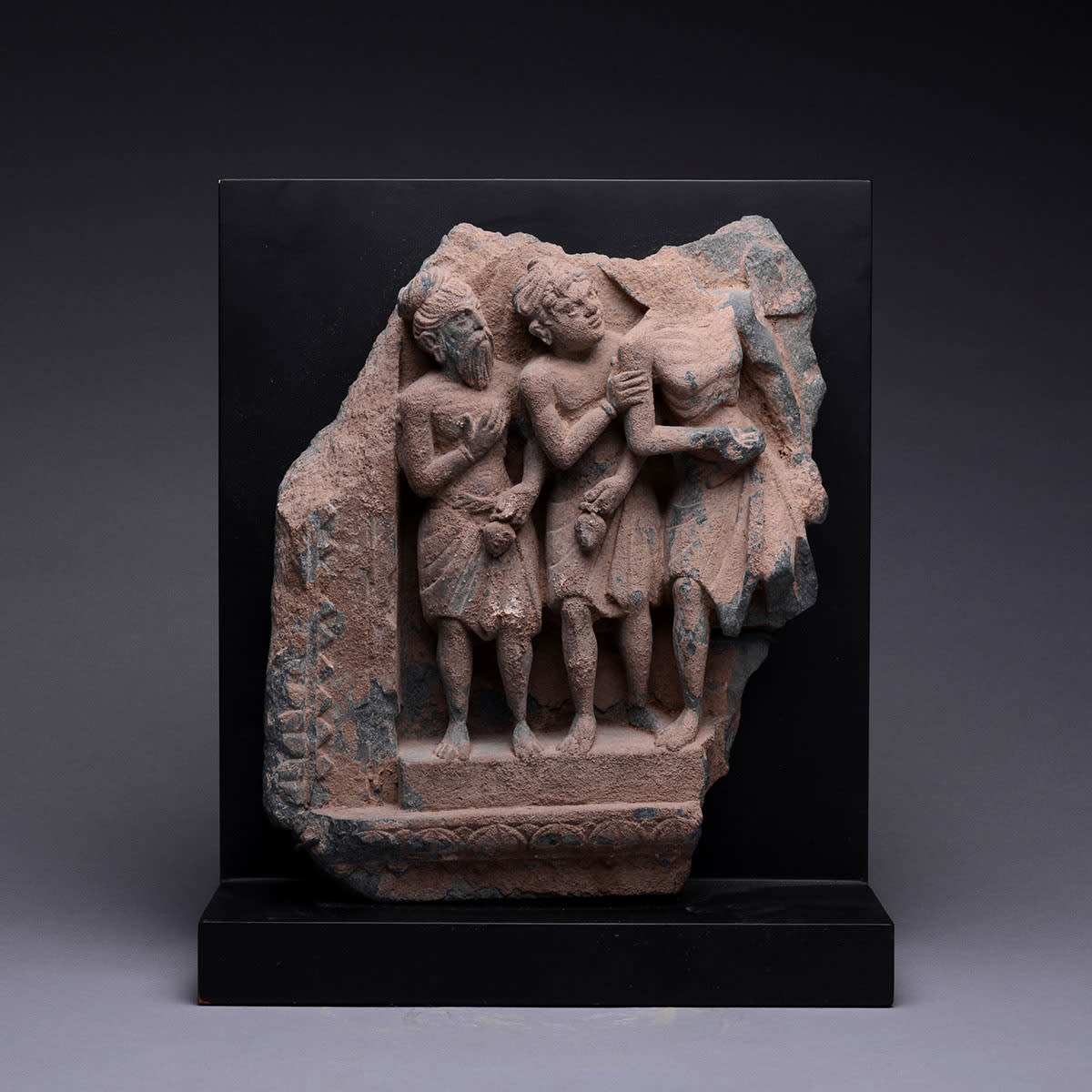Gandhara Schist Relief of Monks, 300 CE - 400 CE
Schist
27.3 x 22.2 cm
10 3/4 x 8 3/4 in
10 3/4 x 8 3/4 in
PF.0025
Further images
A beautiful Gandharan Schist Relief created between 300 and 400CE, depicting three Monks. The three figures are depicted to be facing skyward, with the Monk on the far left holding...
A beautiful Gandharan Schist Relief created between 300 and 400CE, depicting three Monks. The three figures are depicted to be facing skyward, with the Monk on the far left holding his hand across his heart, while the central figure holds the arm of the Monk on the right. These dramatic depictions suggest a highly religious scene, perhaps of enlightenment.
The golden period of Gandharan art dates to c. 100-200 CE. with the arrival of the Kushans, a Central Asian group under whose governorship the arts and sciences flourished as never before. The mixture of different cultures produced a completely unique set of architectural and artistic traditions. Their greatest monarch, Kanishka, encouraged the arts, and under his reign totally new conventions were to develop including the earliest depictions of the Buddha in human form. The cultural syncretism between eastern themes and western styles has become known as Greco-Buddhism, and is one of the most remarkable – and successful – examples of cultural fusion in history. Everything from architecture to sculpture, coinage and even jewelry developed in new and extraordinary ways. Myths and figures from Greek mythology – such as Atlas, or Dionysus – are also found in some friezes and paintings. The Buddhas resemble Greek kings in ersatz togas, sitting in houses influenced by the Corinthian model, while Bodhisattvas and other religious figures are often depicted with startling realism as bare-chested Indian princes.
The golden period of Gandharan art dates to c. 100-200 CE. with the arrival of the Kushans, a Central Asian group under whose governorship the arts and sciences flourished as never before. The mixture of different cultures produced a completely unique set of architectural and artistic traditions. Their greatest monarch, Kanishka, encouraged the arts, and under his reign totally new conventions were to develop including the earliest depictions of the Buddha in human form. The cultural syncretism between eastern themes and western styles has become known as Greco-Buddhism, and is one of the most remarkable – and successful – examples of cultural fusion in history. Everything from architecture to sculpture, coinage and even jewelry developed in new and extraordinary ways. Myths and figures from Greek mythology – such as Atlas, or Dionysus – are also found in some friezes and paintings. The Buddhas resemble Greek kings in ersatz togas, sitting in houses influenced by the Corinthian model, while Bodhisattvas and other religious figures are often depicted with startling realism as bare-chested Indian princes.
Literature
V1





